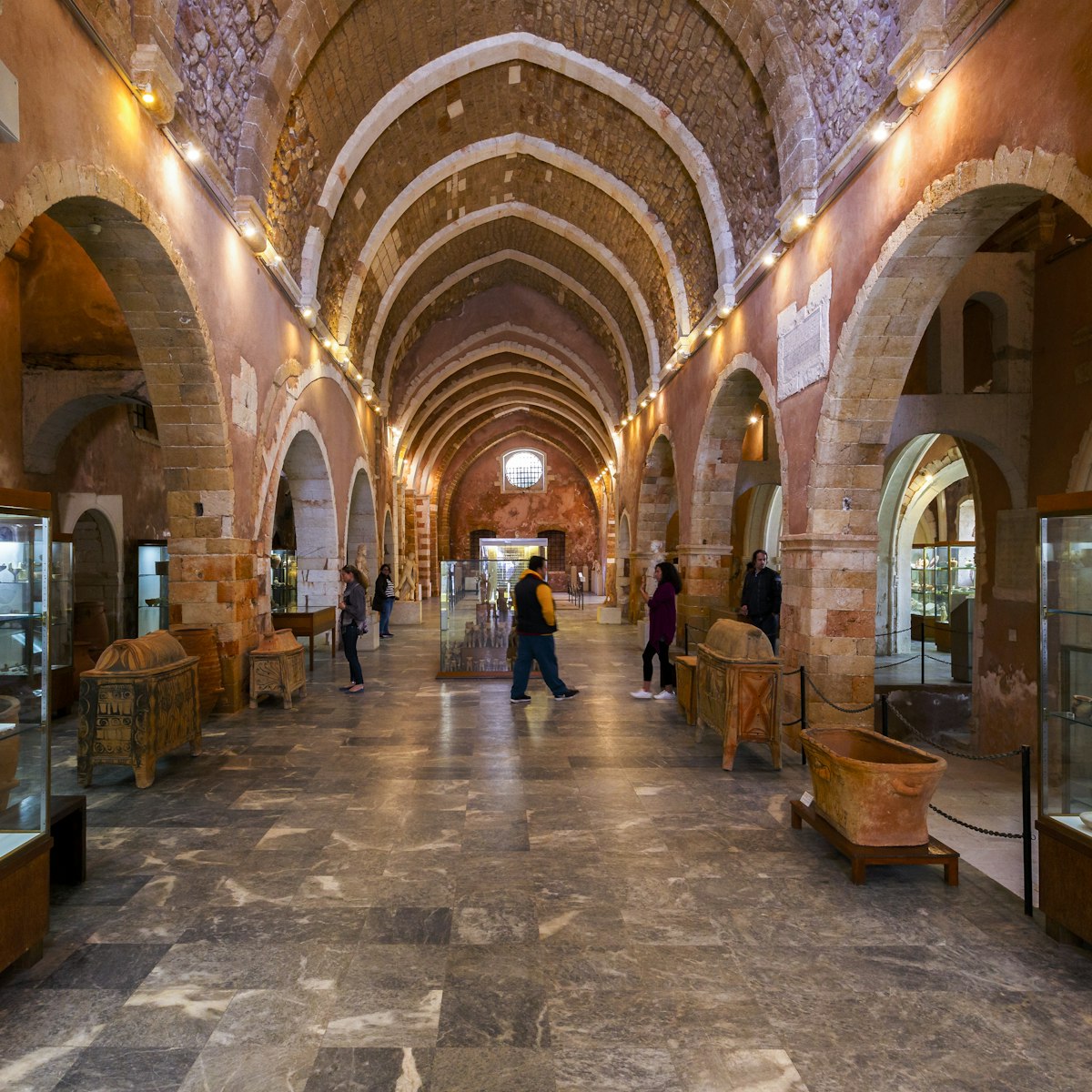The ruins of ancient Lissos are a pleasant 3.5km hike from Sougia on the coastal (though not waterfront) path to Paleohora, which starts at the far end of Sougia’s small port. Lissos arose under the Dorians, flourished under the Byzantines and was destroyed by the Saracens in the 9th century. A port for inland Elyros (now gone), it was part of a league of city-states, led by ancient Gortyna, that minted its own gold coins inscribed with the word ‘Lission’.
If you don't fancy a hike, the other option is take a water taxi to the nearby cove and walk up.
At one time there was a reservoir, a theatre and hot springs here, but these have not yet been excavated. Most of what you see dates from the 1st to the 3rd century BC, when Lissos was known for its curative springs. The 3rd-century-BC Temple of Asklepion was built next to one of the springs and named after the Greek god of healing, Asclepius.
Excavations here uncovered a headless statue of Asclepius along with 20 other statue fragments now in Hania’s Archaeological Museum. You can still see the marble altar base that supported the statue next to the pit in which sacrifices were placed. The other notable feature is the mosaic floor of multicoloured stones intricately arranged in beautiful geometric shapes and images of birds. On the way down to the sea there are traces of Roman ruins, and on the western slopes of the valley are unusual barrel-vaulted tombs.
Nearby are the ruins of two early Christian basilicas – Agios Kyriakos and the Panagia – dating from the 13th century.
Lissos has a beautiful pebbly beach to cool off at after the hike, and if you come on 15 July you'll stumble on the festival held in honour of Agios Kyriakos.







